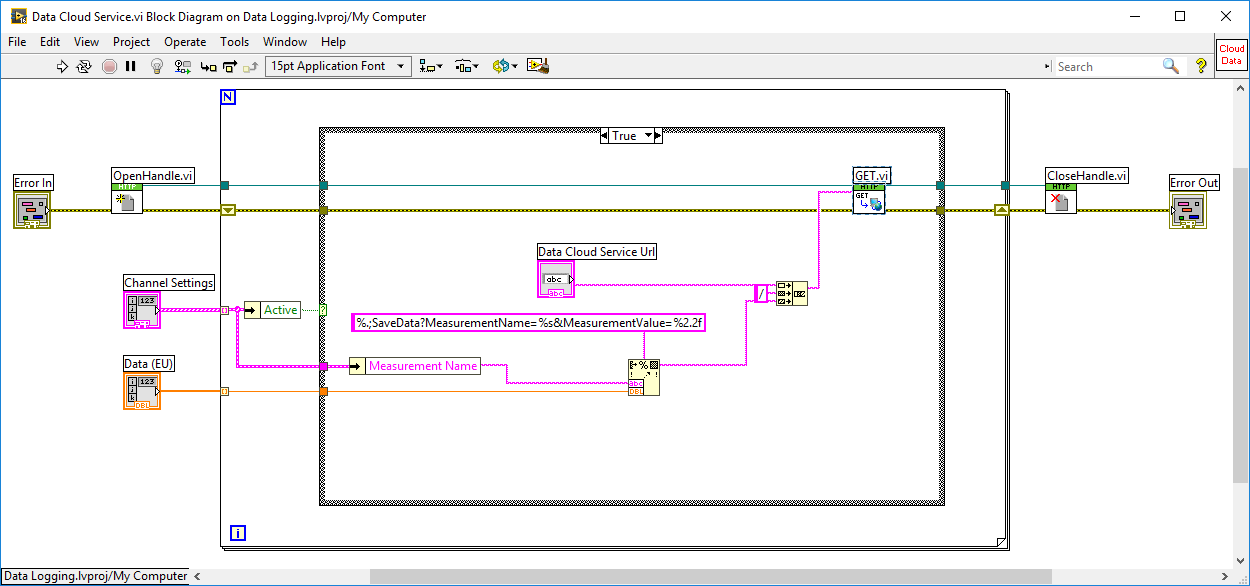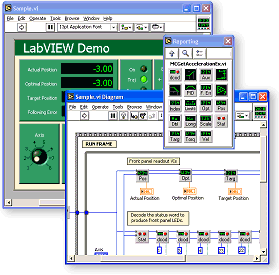
From here, the leftovers are removed and sent into a shift register to add onto the next transmission since that will contain the rest of the sentence. Our first while loop breaks the transmission by the new line character since each NMEA sentence ends with this. OK we have an NMEA transmission from the GPS. You probably have noticed some extra calculations and shift registers but those will be addressed later. We can use the byte array to string to convert the incoming byte array into the actual NMEA string. Each letter or number sent via UART is in ASCII so if the number 0 is sent, the UART read will read 48 decimal which is 0 in ASCII.
#How to download labview library serial#
We can then use the UART read (byte array) to read the serial data at the port as a byte array.

Using the UART bytes available VI, we can see how many bytes are sitting in the serial buffer. To start the read, the first thing we need to focus on is looking for bytes available at the port. Check out this page to see what the different NMEA sentences are. From the PmodGPS data sheet, we see that it sends data in NMEA sentences. Our UART connection is set up and now what we need to do is read the values from our GPS. Thus for the PmodGPS we need to connect 3DF and 1PPS to GPIO channels (if you want to read those pins) and we need to connect the RX channel on the PmodGPS to pin 40 on the WF32 and connect TX on the PmodGPS to pin 39 on the WF32. Pin 39 is is the RX channel and pin 40 is the TX channel. The chipKIT WF32 uses UART0 to communicate with LabVIEW so we need to use UART1 (technically the data sheet calls this UART4 but there is a note about how UART4 is accessed using the runtime object Serial1). Now that we know the connections, let's hook up the PmodGPS to the chipKIT WF32. Then of course we have the ground and 3.3V lines to power the module. Pin 4 is called 1PPS which drives the line high for 100ms then low for 900ms and repeats this process (honestly not sure what the point of it is). The second and third pins are the RX and TX lines that actually transmit the information to our board. When the module has a constant fix, the pin stays low and if the module is unable to get a fix then the pin will toggle every second. The first is labeled 3DF which indicates the status of the user's positional fix. Now let's take a look at the PmodGPS data sheet here. There are also many UART connections that only have RX and TX connections.Īn important thing to note about UART connections is that the RX from one board connects to the TX of the other and vice-versa. The RX and TX lines are the ones that actually transmit and receive data so in most cases you can tie RTS and CTS to ground (or sometimes you can even leave them floating). The latest version can be downloaded from National Instruments Corporation website or through the VIPM.UART connections have 4 data channels: RTS "Ready to Send", RX "Receive", TX "Transmit", and CTS "Clear to Send". You will receive an e-mail message once available a new release. Installation in LabVIEW is made as standard VI Package Manager Package.įree updates are included with purchase of a license. No special controller setup procedure is needed - all needed files will be uploaded to the robot controller automatically at first "Open Session" call.
#How to download labview library windows#
Microsoft Windows XP, Vista, 7, 8, 8.1, 10 (32 & 64 bit) or LabVIEW Real-Time.for D and E controller TCP connection must be available.The entire application is developed in NI's powerful LabVIEW Graphical Design Environment.

Using this approach, you do not need to learn specialized robotics programming software, which means you can achieve higher performance and better results in less time. With this library, you can program a single LabVIEW application that integrates all aspects of machine control and automation from part-handling and robot control to advanced measurements, inspection, machine vision and HMI. The library features easy-to-use native LabVIEW VIs for controlling and commanding robots directly from a graphical development environment. With the Kawasaki llibrary, you can easily integrate robots into new types of systems and applications for automated test, laboratory automation, and flexible manufacturing - eliminating complex robotics programming expertise. To do so, close VI Package Manager and LabVIEW, right click the VI Package Manager shortcut, and select "Run As Administrator".

Note: This installer requires VI Package Manager and LabVIEW to be run with Administrator privileges.


 0 kommentar(er)
0 kommentar(er)
